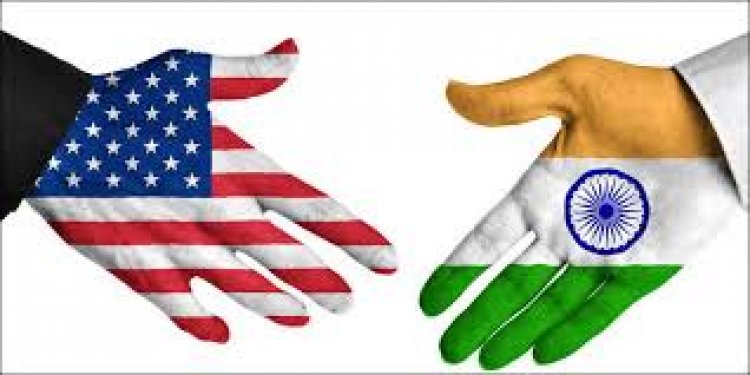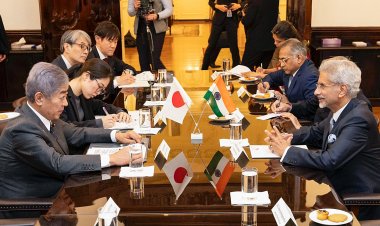India- U.S. Joint Defence Production Possibilities: Buyer-Seller to Partner Nations
The article analyses the India-US defence cooperation and how this relationship is evolving from a buyer-seller relationship to that of co-production and co-development.

Analysis
By Pradeep S. Mehta and Purushendra Singh
Recent developments in the India-U.S. defence cooperation through inking bilateral agreements, conducting joint military exercises, procurement, etc. along with the increasing role of private players in the defense sector indicate the potential for flourishing relations between the two democracies. The relationship is evolving from a buyer-seller relationship to that of co-production and co-development.
Recently the Defence Minister of India, Rajnath Singh, invited US companies to carry out joint R&D, manufacturing and maintenance of defence equipment in India to achieve the ambitious “Make in India, Make for the World” further stressing on the need to move from the buyer-seller relationship to partner nations.
The India-U.S. defence relationship is driven by a mutual interest in commercial and geopolitical areas, which is based upon increasing trust. It’s important to note that the 2+2 ministerial dialogue (both US and Indian Foreign Ministers and Defence Ministers’ joint meetings) between the two countries and the DTTI (Defence Technology & Trade Initiative) group meeting have acted as the cornerstones of this relationship. Facilitating the foundational agreements between the two sovereign and large armed forces would help in making truly joint co-produced products.
The Indian defence industry has grown substantially over the past decade. India exported defence items and technology worth a record Rs. 13,000 crores (US$ 1.63 billion) in 2021-22, an impressive 54.1 percent rise over the previous year. From a nation of imports, it's now becoming a major hub for exports and US is the best bet in this time when the world is passing through an uncertain phase. It not only fulfills India’s ambitions of becoming a net arms exporter but also conveys an important message of capacity to her neighbours.
When the US designated India as a “Major Defense Partner” in 2016, it showed awareness of the population and talent pool India has. India’s policy of Atmanirbhar Bharat in defense does not mean eliminating all the other players entirely – there remain many gaps which could be filled by American technologies and the R&D advantage of the American universities with Indian diaspora catering for both. The U.S. military-industrial complex is driven by the private sector. The private sector in India as well has exhibited its share in defense manufacturing. Well-established private sector companies such as Jindal, Mahindra, MKU, and Tata looking to co-manufacture and co-produce with companies such as General Atomics, Lockheed Martin, Boeing, Raytheon, and General Electric. This showcases the growing quest for joint production and mutual growth.
India now has almost 11 Indian states with an aerospace and defence policy. Many states are taking the lead by setting up defence industrial corridors. Uttar Pradesh and Tamil Nadu have set up the largest defence corridors in the north and south of India with more states vying to join the line-up. The production possibilities are enriching between the two nations as the bedrock foundation is transforming from a place of mistrust to a place of deep trust, according to Subimal Bhattacharjee who is an independent consultant on defence & cyber security and a former Country head of General Dynamics, a major US defense company. Bhattacharjee made this statement during a workshop of the US-CUTS Defense News Conclave Project.
Rick Rossow, Senior Adviser and Wadhwani Chair in US – India Policy Studies, Center for Strategic and International Studies, also observed that the DTTI (Defense Technology and Trade Initiative) is an ambitious and unique framework between the two sides. This needs to move faster to ensure the viability of more projects and toward the realisation of co-production and co-development during the second workshop of the US-CUTS Defense News Conclave Project.
Joint production is a two-way street
In October 2020, the then US Secretary of Defense, Dr. Mark T. Esper noted that building the capacity and capabilities of like-minded nations will foster “interoperability with friendly militaries while creating a stronger domestic industrial base that can compete in the global marketplace”.
These capabilities will advance shared security interests, job growth, and industrial cooperation between both countries and bring down the total expenditure of the respective militaries. The production possibilities are promising between the two nations as the bedrock foundation is transforming from a scenario of mistrust to a place of deep trust.
US supports India as a defense industry leader in the Indo-Pacific and a net provider of security in the region. With the changing nature of modern warfare and the role AI (Artificial Intelligence) will play in warfare, it is slowly being accepted that future wars will be fought in a technology-intensive environment. Electronic Warfare is slowly going to overtake hand-to-hand combat. America is aware of the talent and the technical abilities of Indians which will help them to be leaders in this domain.
The innovation and joint production of emerging technologies would have dual use for civil and military purposes. This co-production can be used for Command, Control, Communication, Computer and Intelligence, Surveillance and Reconnaissance (C4ISR) systems, and operational data analytics. This would have a spillover effect of defence-related technology to be used for other peaceful purposes as well.
Tried and Tested
In the past decade, there have been various successful examples where this joint relationship has proved that joint productions are a possibility. The air-launched small unmanned systems and intelligence, surveillance, target acquisition and reconnaissance (iSTAR) project are a start. India is in talks with Malaysia and Egypt to sell its lone indigenous fighter aircraft, the Light Combat Aircraft ‘Tejas’, which is powered by GE’s F404, an American engine.
As part of the Quad groupings, both are jointly working towards establishing ship refurbishment and maintenance, repair and overhaul (MRO) facilities, which can benefit all Quad navies. The ambitious iCET (initiative on critical and emerging technologies) is another step in the direction of joint production.
The naval joint working group between both countries is constructively engaged with the US Navy for aircraft carrier technology cooperation, Indian frigates, aircraft carriers and destroyers which use American engines.
Roadblocks and hurdles
The road to joint defence production possibilities faces a few legal hiccups and bureaucratic roadblocks going forward. The American defense industry is populated by private companies that own the intellectual property. Thus, the sensitive issue of technical transfer from the American side and cross-border data flows and data policy of both nations delays the process.
The U.S. will have to devise ways to cooperate with India on technologies, developed with government funding, In return India may ease the taxation process and make sure that IP (Intellectual Property) laws are safeguarded. Problems related to unutilised offsets should be resolved through innovative approaches rather than the rigid approach adopted so far of exclusivity of offsets only in defence sectors.
Way forward into co-production
Both nations are getting into agreements to co-develop Air-Launched Unmanned Aerial Vehicles (UAVs), or drones in simple language. India wants to procure long-range missile systems to buttress its air defense mechanism, conventional naval propulsion systems and aircraft engines, cooperation on artificial intelligence, VR and newer technologies both bilaterally as well as within the groupings of Quad, iCET, I2U2 (western Quad group comprising of India, Israel, USA, and UAE) groups focus on building trusted systems and future-ready networks.
In the future, India and the U.S. could explore high-powered directed energy weapons to counter aerial threats like fighter jets, drones and weapons in cyber and space domains. Countermeasures against small drones and swarm drones that are both effective and cost-effective and hypersonic missiles are other potential systems they could collaborate on. The U.S. could also consider a nuclear submarine cooperation project with India. Furthermore, India given its terrain and long borders at high altitudes in the Himalayas, India wants to acquire smaller, lighter and faster tanks for its army. The US could look into this as well.
There have been reports of a $500 million military funding package from the U.S. for India that would deepen security ties. As a growing and large market, India has the potential and the capacity to join up with the US to produce for the world. India has a good strategy and action plan in place, backed by forward-looking policies, to ensure large-scale defence production, and boost the country’s status as a net exporter of weapons in the coming years.
Going forward, both the nations are going to co-produce and co-develop in emerging defense domains, including space and cyberspace. A hybrid Foreign Military Sales (FMS) route could be an effective way forward in the bilateral defense trade. There needs to be an ecosystem for innovation, training, and R&D Facilities that would support defense manufacturing in the state.
There is a need to start a dialogue for greater cooperation between India and the U.S. on aircraft carriers, nuclear-powered submarines, and in the space domain along with catering to the third country markets, especially the developing and responsible nations. The India–U.S. strategic partnership can be a pillar of stability in an increasingly unsteady and uncertain world. By gaining trust and acting as responsible defense manufacturers, both nations can then enhance their presence and influence throughout the region, to counter threats of aggression, drugs, terrorism, cybercrime, and human trafficking, among others. Such steps not only underpin stability but also form the bedrock for continued economic growth of countries in the region with a peaceful and safer world.
Disclaimer: This paper is the author's individual scholastic contribution and does not necessarily reflect the organization's viewpoint.
The authors work for CUTS International, a global public policy research and advocacy group with offices in many countries including the USA.






















